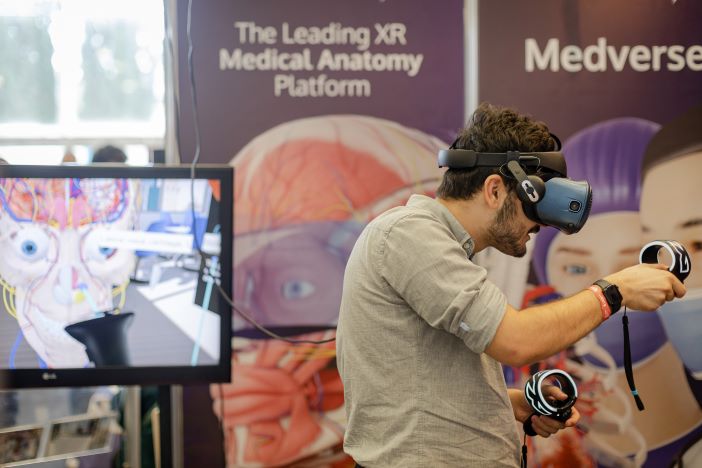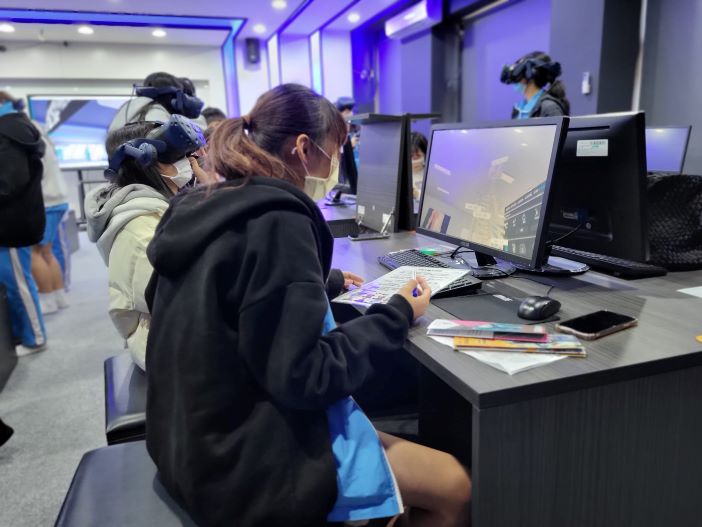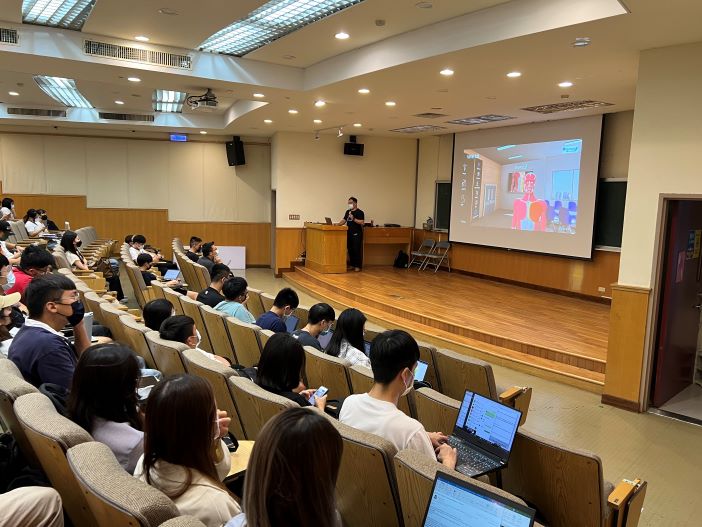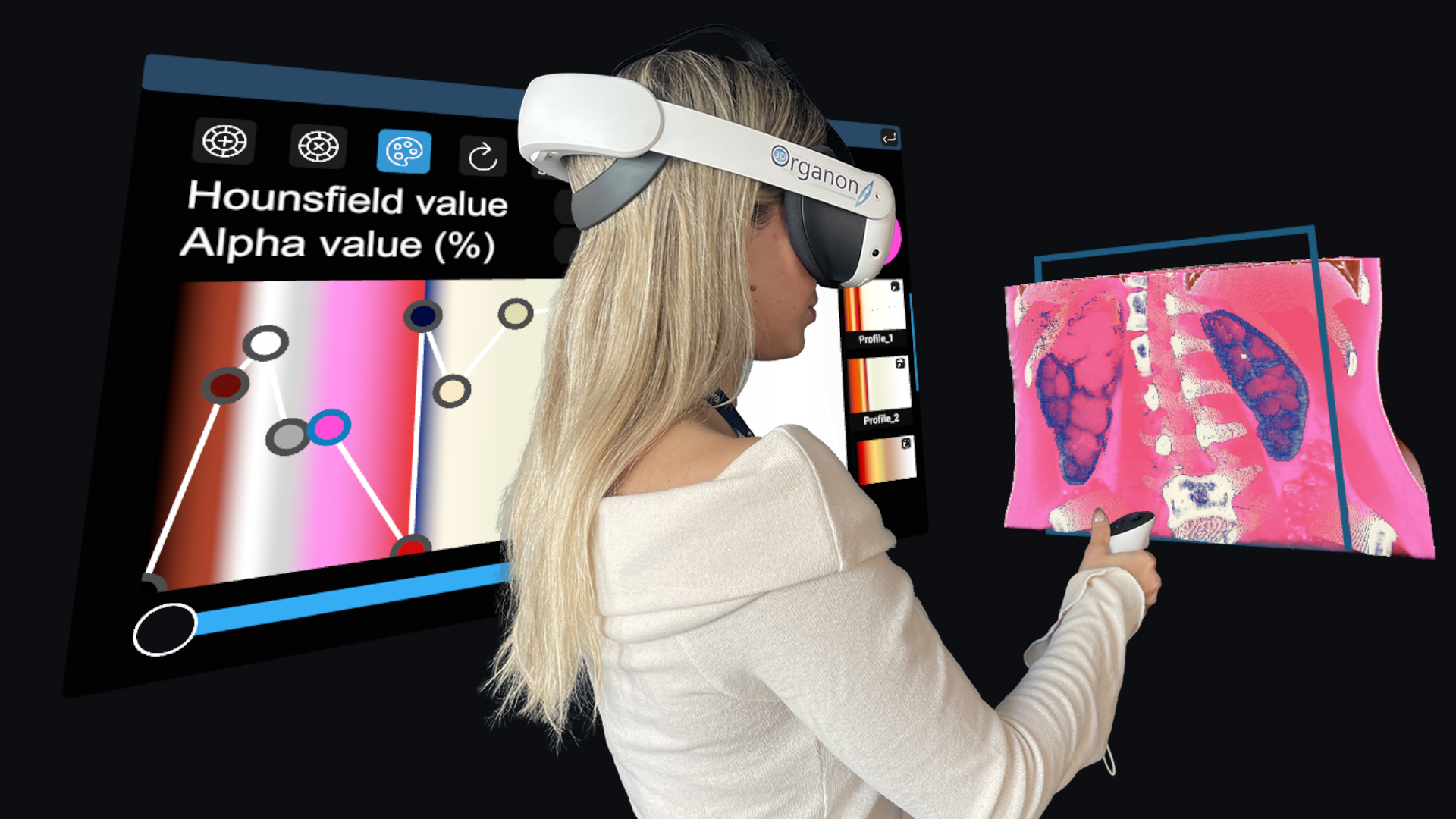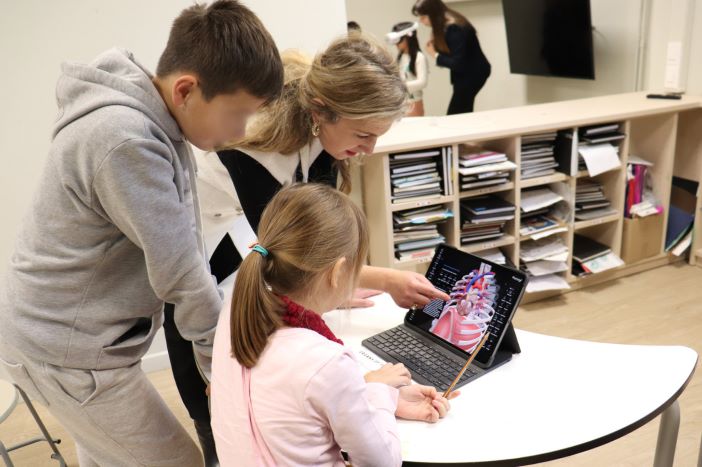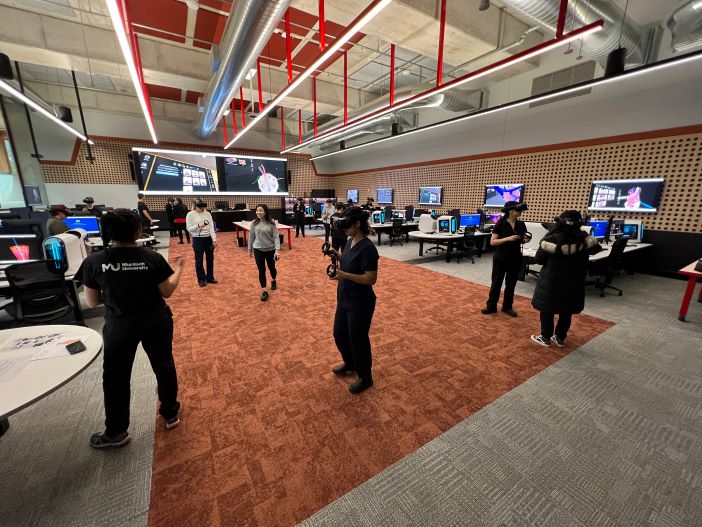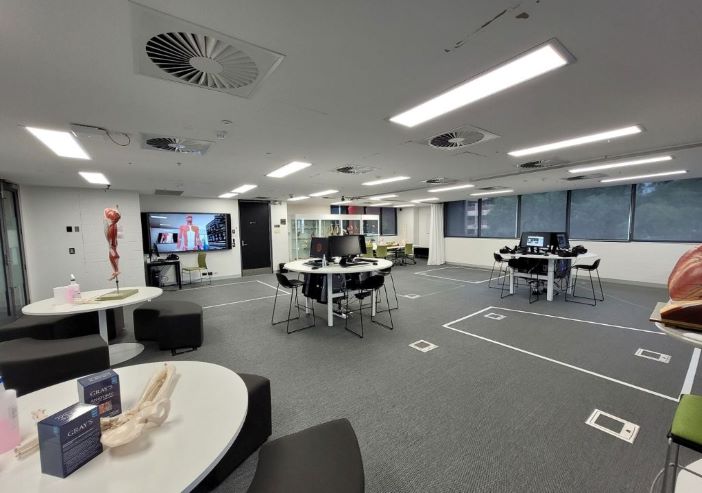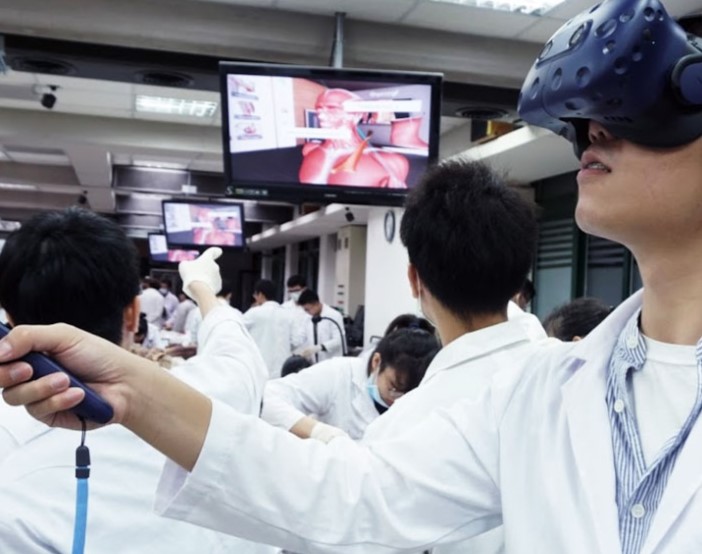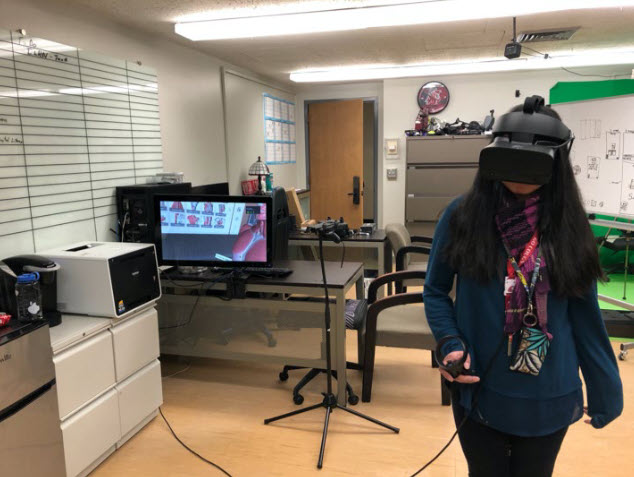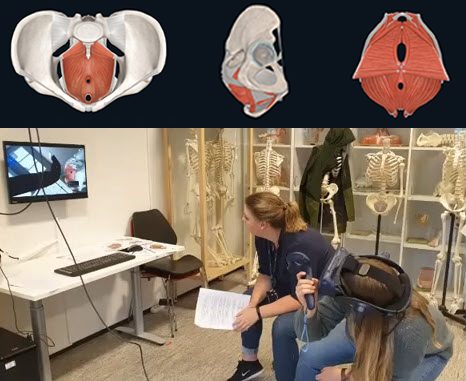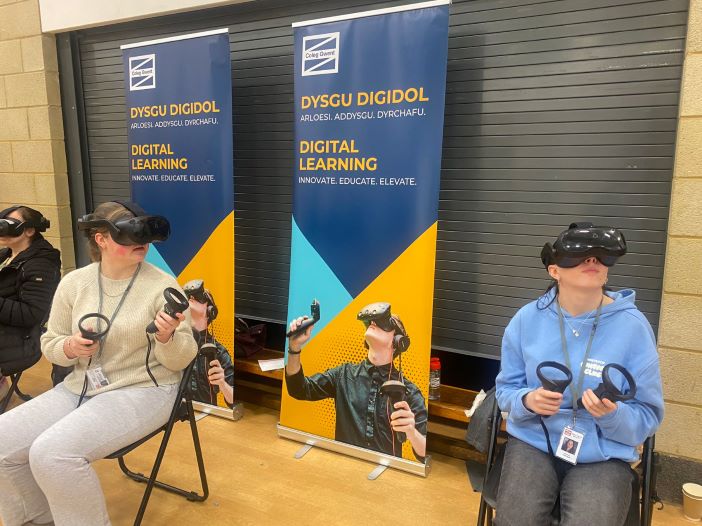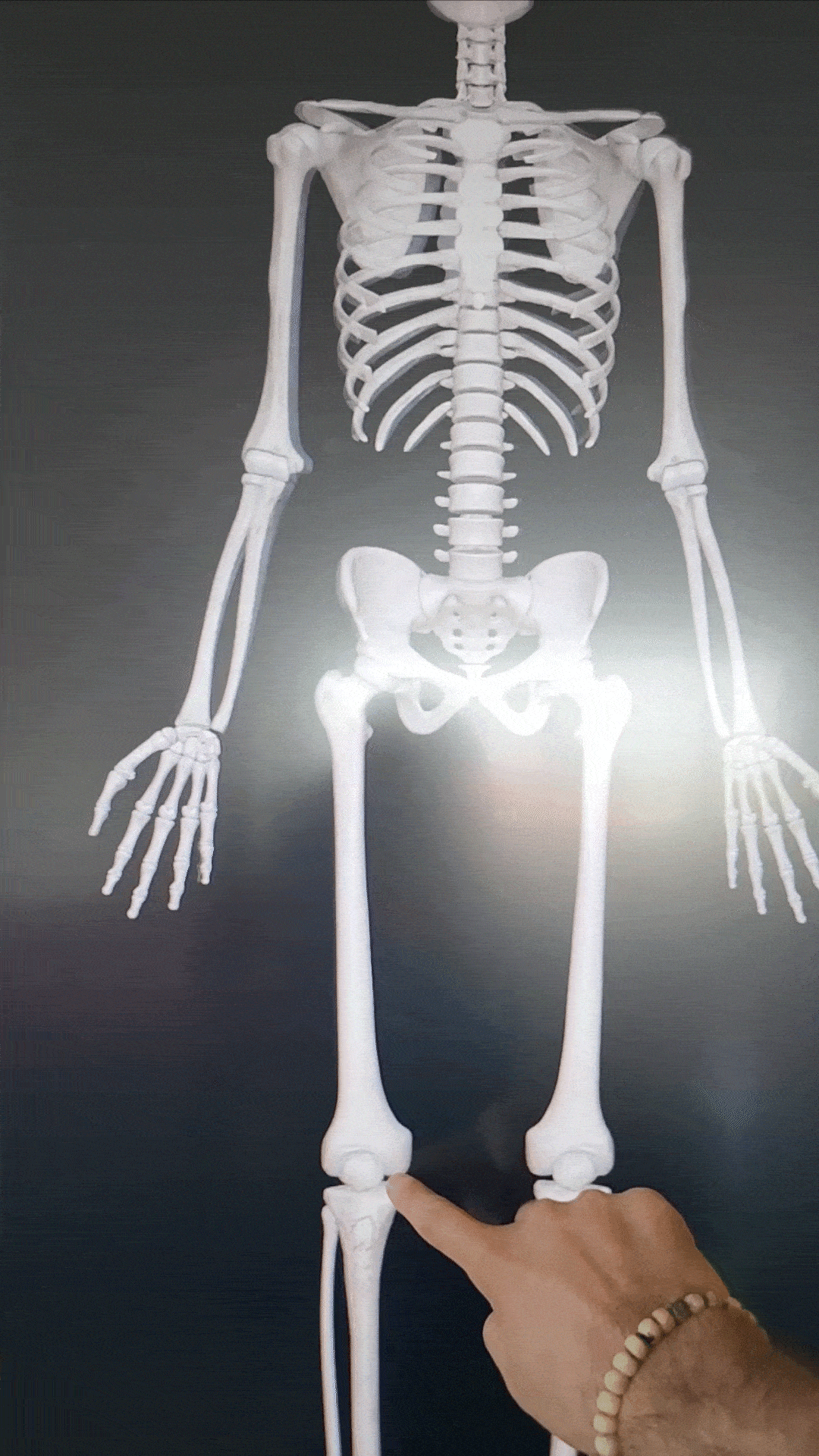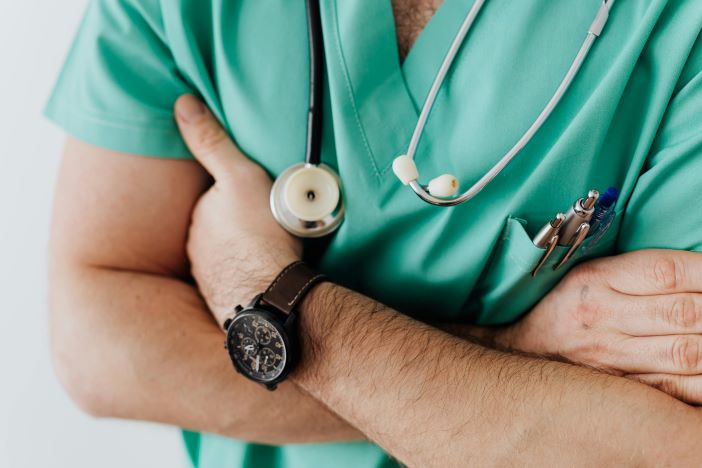3D Organon
Use CasesFrom revolutionizing medical education to enhancing patient care and surgical planning, our platform offers a versatile toolkit for healthcare professionals, educators, and students alike. Explore real-world scenarios and discover how 3D Organon is reshaping the landscape of healthcare training, empowering users to visualize, understand, and interact with the complexities of human anatomy in unprecedented ways.
Join us on a journey through our featured use cases and witness the transformative power of immersive learning experiences in action.
Individual Self-directed Study
Problem: In traditional medical education settings, students often face challenges in comprehensively understanding complex anatomical structures. Conventional methods, such as textbooks and two-dimensional illustrations, may not adequately convey the intricate details and spatial relationships essential for a thorough understanding of anatomy. Additionally, limited access to cadavers or anatomical models restricts hands-on learning opportunities, hindering students’ ability to visualize and internalize anatomical concepts effectively.
Solution: At 3D Organon, we provide a revolutionary solution to address the challenges in medical education. Our advanced XR medical anatomy platform offers a dynamic and immersive learning experience, allowing students to explore anatomical structures in unprecedented detail. Through lifelike 3D models and interactive features, students can navigate through the human body, manipulate structures, and gain a deeper understanding of anatomical relationships. With the ability to mirror views on a second screen or wall projector, students can collaborate effectively and engage in group discussions, further enhancing their learning outcomes. By leveraging state-of-the-art technology, 3D Organon empowers students to overcome traditional barriers in medical education and excel in their studies.
Student- or Educator-led small group teaching
Problem: In traditional small-group teaching sessions within medical education, educators and students often encounter limitations in effectively conveying complex anatomical concepts. Conventional methods, such as textbooks and static presentations, may not fully engage participants or facilitate interactive learning experiences. Moreover, the lack of hands-on tools and resources restricts the ability to demonstrate anatomical structures in real-world contexts, limiting the effectiveness of small group teaching sessions.
Solution: At 3D Organon, we offer an innovative solution to enhance small group teaching experiences in medical education. Our platform supports both student- and educator-led sessions, providing a versatile learning environment that accommodates various devices, including laptops, mobile phones, and tablets. With the incorporation of Augmented Reality (AR) mode, users can superimpose anatomical models onto real-world environments using the mobile and tablet app, creating immersive learning experiences. This feature enables educators and students to visualize anatomical structures in context, facilitating deeper understanding and engagement. Additionally, the ability to superimpose models on human subjects further enhances the authenticity of the learning experience, allowing for hands-on exploration and interactive discussions. By leveraging the power of technology, 3D Organon revolutionizes small group teaching, empowering educators and students to effectively convey and comprehend complex anatomical concepts.
Educator-led large group session/lecture
Problem: In traditional large group sessions or lectures within medical education, educators often face challenges in engaging and effectively conveying complex concepts to a diverse audience. Conventional presentation methods, such as slideshows or static diagrams, may fail to captivate participants or provide an immersive learning experience. Additionally, the limitations of traditional teaching tools and resources hinder educators’ ability to demonstrate anatomical structures comprehensively, leading to reduced student engagement and retention of information.
Solution: At 3D Organon, we offer a transformative solution to enhance educator-led large-group sessions and lectures in medical education. Our platform provides educators with the option to utilize the PC-powered VR or Desktop version of 3D Organon, offering a powerful toolkit for delivering dynamic and engaging presentations. With immersive VR capabilities, educators can lead large group sessions with unparalleled realism, allowing participants to explore anatomical structures in a three-dimensional environment. This immersive experience fosters active participation and deeper understanding among students, enhancing learning outcomes. By leveraging VR technology, educators can create interactive and memorable learning experiences that capture the attention of large audiences and facilitate comprehensive comprehension of anatomical concepts. With 3D Organon, educators have the tools they need to revolutionize large group teaching sessions, empowering them to inspire and educate the next generation of medical professionals.
Formative Assesment
Problem: Traditional formative assessment methods in medical education often rely on static images or written descriptions, limiting the depth of understanding and engagement among students. These methods may fail to accurately assess students’ comprehension of complex anatomical concepts and spatial relationships, leading to challenges in identifying areas for improvement and providing targeted feedback. Additionally, conventional assessment tools may lack interactivity and fail to fully leverage the benefits of technology in enhancing the learning experience.
Solution: 3D Organon introduces an innovative formative assessment method that addresses the limitations of traditional approaches. By integrating interactive 3D models into the assessment process, students are required to explore the anatomical structures and select the correct answer option based on their understanding. This approach not only tests students’ knowledge but also evaluates their ability to apply anatomical principles in a practical context. By engaging students in active learning and problem-solving, 3D Organon’s formative assessment method enhances comprehension, retention, and critical thinking skills. Moreover, the interactive nature of the assessment fosters student engagement and motivation, leading to more meaningful learning outcomes. With 3D Organon, medical educators can effectively assess students’ understanding of anatomy while providing valuable feedback for continuous improvement.
Patient Education
Problem: In patient education, doctors often encounter challenges in effectively communicating complex medical concepts and anatomical details to patients. Traditional methods of patient education, such as verbal explanations or two-dimensional diagrams, may fail to fully convey the appearance, position, and relationships of body structures, leading to confusion and misunderstanding among patients. This knowledge gap between patients and doctors can result in patient anxiety, dissatisfaction, and limited engagement in their own healthcare decisions.
Solution: 3D Organon is revolutionizing patient education by empowering patient-centered medicine through visually engaging tools and resources. Our platform enables doctors to visually explain the appearance, position, and relationships of body structures to patients in a clear and comprehensible manner. By leveraging interactive 3D models and animations, doctors can bridge the knowledge gap between patients and themselves, facilitating better understanding and informed decision-making. With 3D Organon, patients can actively engage in their healthcare journey by gaining insights into their condition, treatment options, and prognosis. This patient-centered approach fosters trust, confidence, and collaboration between patients and doctors, ultimately leading to improved patient outcomes and satisfaction. By empowering doctors with innovative patient education tools, 3D Organon is transforming the healthcare experience and empowering patients to take control of their health.
Multi-user cross-platform session
Problem: In traditional multi-user cross-platform sessions within medical education, educators often face challenges in facilitating interactive and collaborative learning experiences across various devices and locations. Conventional methods of conducting online sessions may lack the flexibility and interactivity required to engage students effectively, while the lack of seamless integration between different platforms and devices limits educators’ ability to deliver immersive and cohesive learning experiences to a diverse group of participants.
Solution: At 3D Organon, we offer an innovative solution to address these challenges. Our platform supports educators in conducting online sessions using the VR, Desktop, or Tablet/Smartphone version of 3D Organon, ensuring compatibility with a wide range of devices. This flexibility enables educators to cater to diverse student preferences and technical capabilities, fostering inclusivity and accessibility in virtual classrooms. By leveraging the VR, Desktop, and Tablet/Smartphone versions of 3D Organon, educators can create immersive and engaging online sessions that transcend physical barriers and enable seamless collaboration among students. With the ability to join sessions from any device, students have the flexibility to learn anytime, anywhere, empowering them to excel in their medical education journey.
Library-designated VR workstations
Problem: In the realm of virtual labs, library workstations, and museums dedicated to anatomy education, students often encounter challenges in accessing immersive and comprehensive learning experiences. Traditional methods of studying anatomy in these settings may involve static resources, limited interactivity, and lack of engagement, hindering students’ ability to fully grasp anatomical concepts. Additionally, cumbersome navigation and restricted access to anatomical models and educational materials may impede students’ learning progress and exploration.
Solution: 3D Organon offers an innovative solution to enhance virtual labs, library workstations, and museum experiences dedicated to anatomy education. Through designated VR workstations in libraries or virtual museum settings, students can quickly access immersive anatomy education that transcends the limitations of traditional resources. Our platform provides students with interactive 3D models, detailed anatomical structures, and engaging educational materials, allowing them to explore anatomy in depth and at their own pace. By leveraging VR technology, students can immerse themselves in realistic anatomical environments, interact with virtual specimens, and gain a deeper understanding of human anatomy. This approach enables students to engage with anatomy education in a dynamic and interactive way, fostering curiosity, exploration, and comprehension. With 3D Organon, virtual labs, library workstations, and museums become vibrant hubs of anatomical learning, empowering students to excel in their studies and careers in healthcare.
Simulation Centers
Problem: Simulation centers play a critical role in medical education, providing trainees with opportunities to practice skills and procedures in a controlled environment. However, traditional simulation methods may lack the realism and immersion necessary for effective training. Mannequin-based simulators can be expensive, require frequent maintenance, and may not accurately replicate anatomical structures or clinical scenarios. This can limit the effectiveness of simulation training and compromise the development of essential skills among medical trainees.
Solution: 3D Organon’s Virtual Reality (VR) platform offers an innovative solution to enhance simulation training in medical education. With our immersive Ultrasound VR Simulator, trainees can gain an in-depth understanding of anatomy, ultrasound scanning positions, and orientations, enabling them to effectively demonstrate desired views with unparalleled realism. What sets 3D Organon apart is its unique design, eliminating the need for expensive mannequins or custom devices, and making simulation training more accessible and cost-effective. This breakthrough technology allows trainees to practice skills and procedures in a safe yet lifelike environment, ultimately improving the quality and effectiveness of simulation training while ensuring patient safety.
Cadaveric dissection
Problem: In many countries, cadaveric dissection remains a cornerstone of medical education; however, legal restrictions, ethical considerations, and logistical challenges often hinder its widespread use. Additionally, cadavers are not only expensive to procure but also fragile, limiting their availability and practicality for extensive educational use. Furthermore, the use of cadavers may raise cultural sensitivities and ethical concerns, further complicating their utilization in medical education. These challenges create barriers to providing students with hands-on experience and a comprehensive understanding of human anatomy, impacting their proficiency in surgical procedures and clinical practice.
Solution: 3D Organon offers an innovative solution to enhance cadaveric dissection in medical education. Our platform provides students with detailed 3D models that serve as a valuable tool for comparing anatomy during cadaveric dissection. By utilizing 3D Organon models, students can gain a primer on the anatomical planes of dissection and the structures involved, facilitating a deeper understanding of human anatomy. Additionally, with the Mixed Reality mode, students can compare 3D models with real-life cadaveric specimens, allowing for a seamless integration of virtual and physical learning experiences. This immersive approach not only enhances students’ comprehension of anatomical structures but also improves their spatial awareness and surgical proficiency. By leveraging 3D Organon for cadaveric dissection, medical educators can enrich the learning experience, ultimately empowering students to excel in their medical studies and clinical practice.
Teaching Students with Intellectual and Developmental Disabilities
Problem: Teaching complex subjects such as human anatomy to postsecondary students with intellectual and developmental disabilities (IDD) poses significant challenges. Traditional educational methods often fail to engage these students effectively or accommodate their unique learning needs, making it difficult for them to grasp and retain scientific vocabulary and concepts. As a result, educators need innovative teaching tools that can provide interactive, immersive learning experiences tailored to the abilities of students with IDD.
Solution: 3D Organon, a cutting-edge XR software, offers a transformative solution for teaching human anatomy to students with IDD. By utilizing VR headsets, 3D Organon creates an engaging and interactive learning environment where students can explore detailed 3D models of anatomical structures. This immersive experience helps students with IDD to better understand and retain complex vocabulary and concepts related to human anatomy. According to a research paper by Dr. Kathryn M. Abrams and her colleagues, students using 3D Organon showed significant improvement in their ability to define and label anatomical terms. The interactive nature of the VR sessions enhances student engagement, making learning more enjoyable and effective, proving the effectiveness of VR as an educational tool for diverse learners.
https://journals.gmu.edu/index.php/jipe/article/view/3546/2330
Midwifery Education
Problem: Traditional midwifery education often struggles to effectively teach the complex spatial relationships of the female pelvic anatomy, which are critical for understanding labor and fetal positioning. Lecture-based methods provide limited hands-on learning, making it difficult for students to fully grasp 3D anatomical structures. This gap in spatial understanding can result in lower knowledge retention and inadequate preparation for real-world midwifery practice.
Solution: 3D Organon XR offers an immersive VR platform that enables midwifery students to interact with 3D anatomical models of the female pelvis. Through virtual manipulation—zooming, rotating, and exploring the anatomy—students gain a deeper understanding of pelvic structures in a dynamic, hands-on environment. The collaborative virtual sessions enhance spatial awareness, improve knowledge retention, and simulate real-world scenarios like fetal movement through the pelvis during labor, providing a more effective and engaging learning experience.
Open Days and Conferences
Problem: During university events, conferences, and open days, it can be challenging to capture attendees’ attention and create meaningful learning experiences that showcase the institution’s commitment to innovation and excellence in education.
Solution: Integrating 3D Organon into university events, conferences, and open days offers a transformative approach to teaching anatomy, addressing the limitations of traditional methods and captivating attendees’ attention. Through interactive demonstrations and hands-on activities, participants can explore detailed 3D models of anatomical structures, gaining a deeper understanding of the human body. By showcasing the versatility and effectiveness of 3D Organon, institutions demonstrate commitment to innovation in medical education, attracting prospective students and faculty while increasing the event’s success and elevating its profile within the academic and professional community.
Operating Theater – Surgical Planning and Training
Problem: Operating theaters serve as crucial environments for surgical planning and training, where the revision and guidance of anatomy before and during surgery are essential. However, traditional methods of surgical planning and training may be limited in their ability to provide comprehensive anatomical guidance, leading to challenges for both students and resident doctors. The lack of immersive and interactive tools may hinder the understanding of complex anatomical structures and surgical procedures, impacting the quality of surgical training and patient outcomes.
Solution: 3D Organon’s Virtual Reality (VR) platform offers an innovative solution to enhance surgical planning and training in operating theaters. Our VR technology provides surgeons, students, and resident doctors with a lifelike environment to revise and guide anatomy before and during surgery. With detailed 3D models and interactive simulations, users can explore anatomical structures in depth, gaining a better understanding of surgical procedures and potential challenges. This immersive experience is particularly suitable for student rotations and resident doctor training, allowing them to practice surgical techniques in a realistic yet risk-free environment. By leveraging 3D Organon for surgical planning and training, operating theaters can enhance the quality of education and preparation for surgical procedures, ultimately leading to improved patient outcomes and safety.
Cave Immersive Classrooms
Problem: In traditional medical education settings, students often struggle with understanding and retaining complex anatomical structures due to the limitations of 2D textbooks and static models. Additionally, large classrooms may lack the immersive experience needed for in-depth exploration of human anatomy. As a result, students may find it challenging to visualize the human body in three dimensions or understand the spatial relationships between different systems, leading to a less engaging and impactful learning experience.
Solution: By integrating 3D Organon within the Cave immersive classroom, medical education is revolutionized. Imagine students stepping into a room where life-sized, high-resolution anatomical models are projected onto the walls, offering a fully interactive and engaging learning experience. Instructors can guide students through detailed anatomical structures in real-time, enabling them to explore organs, tissues, and systems from every angle. The Cave environment facilitates hands-on learning, where students can manipulate and dissect 3D models, enhancing their understanding and retention. This immersive approach not only deepens student engagement but also fosters a more intuitive and memorable grasp of complex medical concepts, transforming the way anatomy is taught.
Medical Workshops with Interactive Touchscreen Technology
Problem: Medical workshops often rely on static presentations and traditional anatomical models, limiting participants’ ability to interact with and fully explore complex anatomical structures. This passive learning environment can result in reduced engagement, incomplete understanding of key concepts, and difficulty applying knowledge in practical, real-world clinical settings. Workshop participants, especially in surgical or diagnostic fields, need dynamic, hands-on experiences to grasp the intricate details of human anatomy and medical procedures.
Solution: A touchscreen-based 3D platform offers an ideal solution for medical workshops, providing an interactive and engaging learning experience. With a large, responsive touchscreen, participants can explore detailed 3D anatomical models by rotating, zooming, and manipulating structures in real time. This hands-on approach allows attendees to visualize and understand complex anatomical relationships, enhancing both spatial understanding and knowledge retention. The touch-based interaction promotes active learning, improves engagement, and facilitates collaborative discussions among participants. By incorporating this technology into workshops, medical professionals gain a deeper, more practical understanding of anatomy, preparing them more effectively for clinical applications.
Clinical Skills
Problem: In medical education, clinical skills workshops play a vital role in preparing students for real-world patient interactions and examinations. However, students may encounter challenges in effectively revising anatomy before and during these workshops. Traditional methods of revision, such as textbooks and static images, may not fully prepare students for the dynamic nature of physical examinations. Furthermore, the lack of interactive tools and resources may hinder students’ ability to visualize anatomical structures in relation to surface anatomy and X-ray imaging, impacting their proficiency in clinical skills.
Solution: 3D Organon offers an innovative solution to enhance clinical skills workshops by providing comprehensive revision of anatomy before and during physical examination sessions. With our platform, students can engage in surface anatomy painting and X-ray visualization, allowing them to explore anatomical structures in a dynamic and interactive manner. By revising anatomy using 3D models, students gain a deeper understanding of the spatial relationships between surface landmarks and underlying structures, enhancing their ability to perform physical examinations accurately. Additionally, X-ray visualization enables students to interpret radiographic images effectively, further enhancing their clinical skills and diagnostic capabilities. By leveraging 3D Organon for anatomy revision in clinical skills workshops, medical educators can ensure that students are adequately prepared for real-world patient encounters, ultimately improving the quality of patient care.
Medical Research
Problem: Education research often grapples with the challenge of identifying and implementing effective tools and methods to enhance learning experiences and improve student outcomes. Traditional approaches may fall short in engaging students and facilitating deep understanding, particularly in complex subjects such as anatomy. Furthermore, the integration of technology in education introduces its own set of challenges, including issues related to accessibility, usability, and pedagogical effectiveness. In this context, exploring the integration and impact of innovative tools like 3D Organon in education presents an intriguing subject for research. Understanding how platforms such as 3D Organon can address these challenges and improve educational outcomes is essential for advancing the field of education and informing evidence-based instructional practices.
Solution: By leveraging advanced visualization techniques and immersive 3D models, 3D Organon has the potential to revolutionize anatomy education, providing students with engaging and effective learning experiences. The research focused on 3D Organon can explore its utilization in various educational settings, its effectiveness in enhancing student engagement and comprehension, and its role in promoting collaborative learning and interdisciplinary approaches. Additionally, investigating the pedagogical strategies and best practices for integrating 3D Organon into curricula can inform educators on how to effectively leverage the platform to maximize its benefits in the classroom. By addressing these research questions, scholars can contribute to the advancement of technology-enhanced learning strategies and help shape the future of education, ultimately leading to more engaging, accessible, and effective educational experiences for students.

